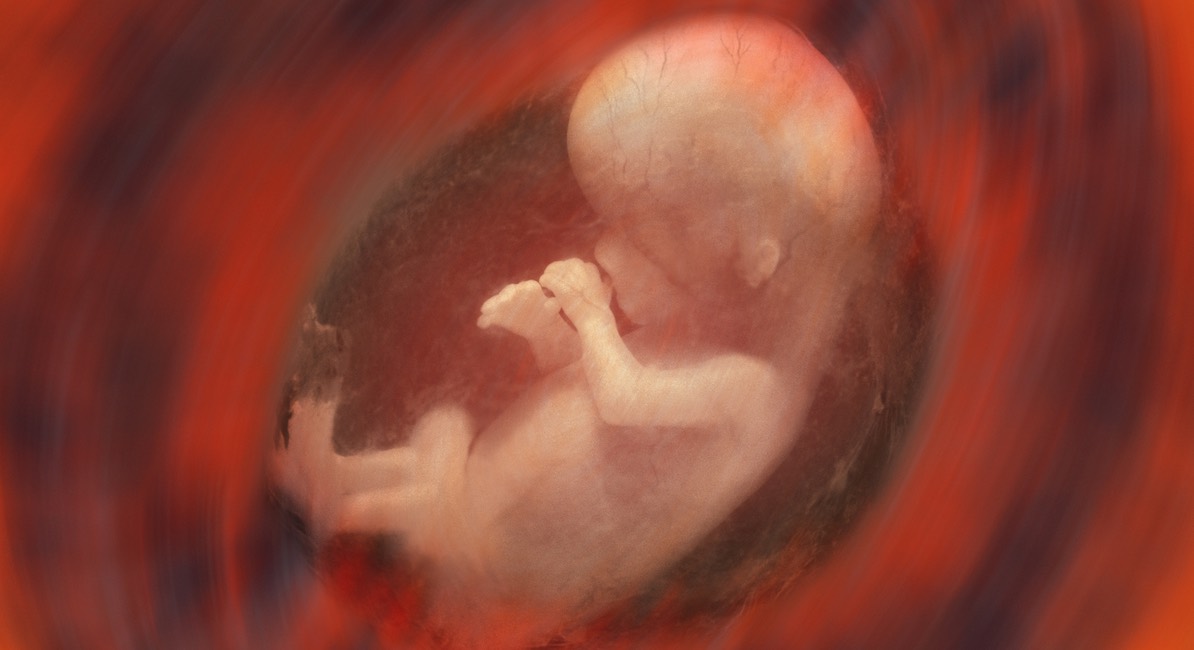According to polling, nine percent of people who consider themselves “pro-life” and 33% of those who consider themselves “pro-choice” actually have the same opinion on abortion — they believe it should be restricted to the first three months of pregnancy (the first trimester).
This, as Secular Pro-life called it, is a “get-out-of-the-debate free card.” There is no such thing as a compromise when it comes to abortion — either it kills a human being or it doesn’t, no matter the timestamp date on the ultrasound image. So what has led so many pro-lifers and abortion supporters to believe that the younger a human being is, the more ethical it is to kill her?
Mass marketing
The abortion industry is powerful — especially Planned Parenthood, which has used skilled marketing and millions of dollars to convince Americans that in the first few months of pregnancy, an embryo is nothing more than a “clump of cells,” “pregnancy tissue,” or “product of conception.” Planned Parenthood’s own website includes details about human development — including information stating that the preborn child has a functioning heart at 5-6 weeks post-fertilization — but when it comes to pro-life bills referred to as “heartbeat bills,” Planned Parenthood contradicts itself.
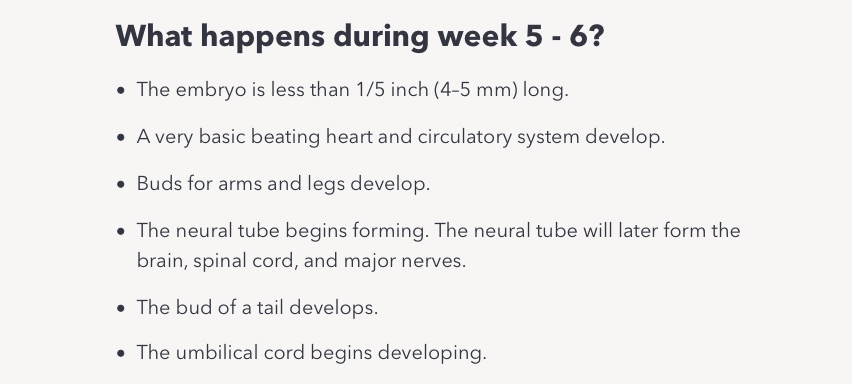
Screenshot from Planned Parenthood’s website on a preborn baby’s heart (listed by gestational age)
“In truth, the ‘fetal heartbeat’ talking point is nonsense: disinformation intended to deceive the press and public,” Planned Parenthood claimed elsewhere online. “[A]t six weeks of fetal development, there is no ‘heart’ that beats — instead, there is detectable activity within a 4-millimeter wide growth known as a fetal pole…”
So, which is it? With such confusing information being pushed on Americans, it’s no wonder there is such a deep misunderstanding about fetal development.
A preborn child is either alive or not
Either the entity inside the womb is a living human being or it’s not. There is no magic moment when an embryo or a fetus suddenly morphs into a human being. Though abortion advocates have at times reverted back to the idea of the “quickening” — the first movements of the baby felt by the mother — as the moment when life begins, modern science has given us a much clearer understanding of life inside the womb. At the moment of fertilization, there is a unique human being with his or her own DNA beginning his or her own journey of life. All of the child’s genetic traits are present — eye color, hair color, skin color, and resemblance to mother or father — to name a few. Abortion ends that life prematurely and violently.
On the sixth day post-fertilization, the Endowment for Human Development states that this new human being, now in the embryonic stage of life, attaches to the wall of the uterus. The placenta then begins to form.
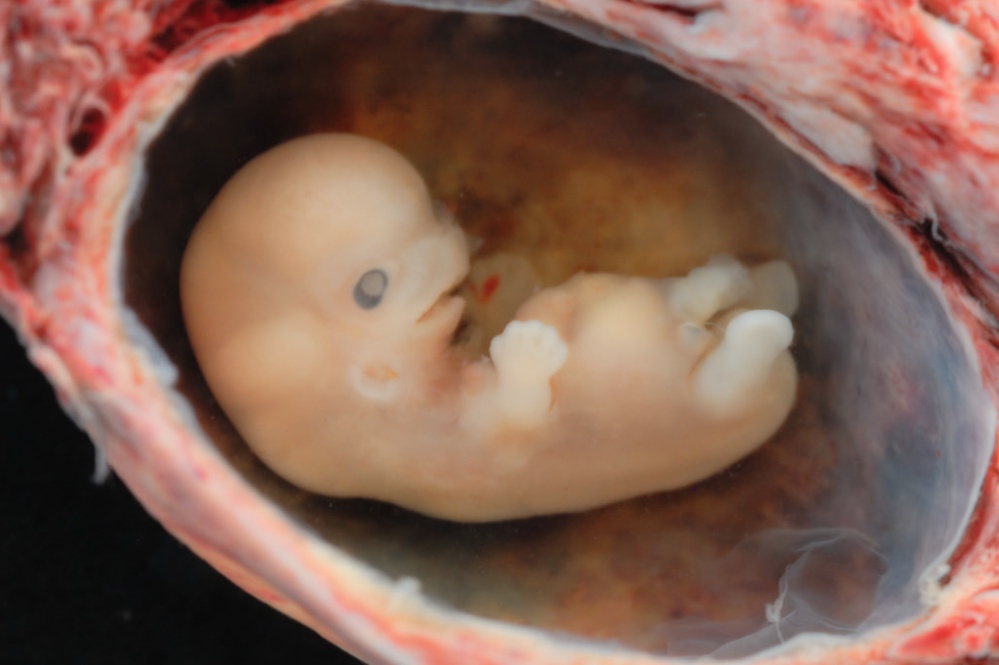
Six weeks from fertilization.
Over the next 10 weeks of pregnancy, this child will rapidly develop. After just two weeks, the brain is the first organ to appear and a few days later the heart is visible. By 21 days after fertilization, the heart begins to beat. By five weeks, the limb buds have grown as have the kidneys, and by six and a half weeks the bones are forming. At seven weeks, the heart has divided into four chambers, and the heart rate peaks at 165 to 170 beats per minute. By now, the baby’s head can rotate, she can move her legs, and she can even get the hiccups.
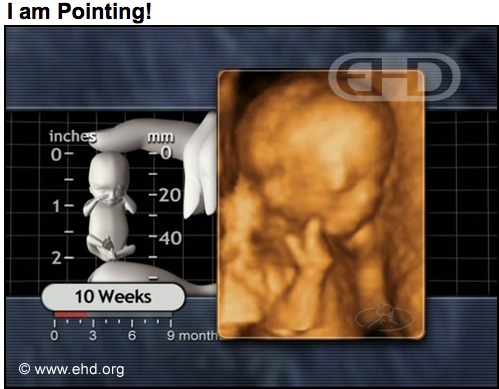
Preborn child at 10 weeks gestation.
At eight weeks, the preborn child begins to swallow fluid routinely, suck her thumb, and open her mouth. Her face, hands, and feet can sense touch. By 12 weeks, a preborn baby can make complex facial expressions, his teeth are growing, and his nose and lips are completely formed.
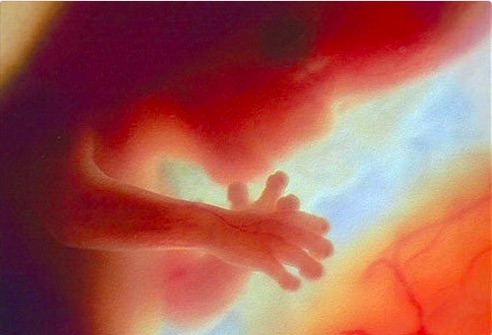
A preborn child at 12 weeks gestation
There is no ethical reason that a human being should be killed through abortion during these three formative months. An at-home pregnancy test can determine pregnancy as early as two weeks after fertilization, but those tests can vary. Abortion advocates argue that most women won’t know they are pregnant until they reach about six weeks. By then, the brain and heart are both working.
Viability
The preborn baby is alive, but abortion advocates argue that despite this, he or she is “non-viable.” Whether or not a preborn child can survive outside the womb does not determine that child’s right to life. There are many born humans who are dependent on ventilators and medications like insulin to keep them alive. Is an adult who requires the use of a ventilator or medication “non-viable?” The fact that their bodies would not be able to live without the use of modern medicine doesn’t make them any less human, any less alive, or any less worthy of the right to life… just as a preborn child’s dependency on her mother’s body doesn’t make her any less human, any less alive, or any less worthy of the right to life.
In addition, even full-term babies are dependent on other human beings in order to survive and this is true for the first years after birth. Their dependency doesn’t make them disposable, it makes them even more worthy of compassion and humane treatment. A vulnerable two-year-old child does not have less of a right to life than an adult. An adult easily has the power over a born child to neglect her, physically abuse her, or kill her — but that doesn’t make it morally acceptable. The only differences between hurting a born child and a preborn child are location, size, age… and legality.
First-trimester abortion
First-trimester abortion procedures are not “simple” and they certainly aren’t “bringing down” missed periods as at least one abortion business claims.
The abortion pill is quickly becoming the go-to first-trimester abortion procedure. For the abortion pill to succeed in killing the preborn child, it (mifepristone) blocks the naturally occurring hormone progesterone and in doing so deprives the growing child of nutrients, causing her to die. A second pill (misoprostol) then causes contractions and the dead baby is expelled from the uterus. Former abortionist Dr. Anthony Levatino explains the process in the video below:
Many women recount horrible abortion pill experiences of incomplete abortions, hemorrhaging, intense pain, and trauma of seeing the bodies of their babies. The abortion pill is touted as safe but is actually shown to be four times more dangerous than first-trimester surgical abortion while carrying a high failure rate.
First-trimester surgical abortion is not a “gentle” procedure as the abortion industry claims. As explained by Dr. Levatino in the video below, the child is killed with the use of a powerful vacuum that sucks her from the safety of the womb with a force 10-20 times that of a household vacuum. Her body is destroyed in the violent procedure. Remember: at this age, preborn children are responsive to touch.
These are not acceptable ways to treat human beings. Abortion in the first trimester is not morally allowable simply because of the child’s age, size, or dependency. It is inhumane. There is only “pro-life” or “pro-abortion.” There can be no middle ground. There is no compromise. Abortion violently destroys innocent human lives and must be abolished.
“Like” Live Action News on Facebook for more pro-life news and commentary!

